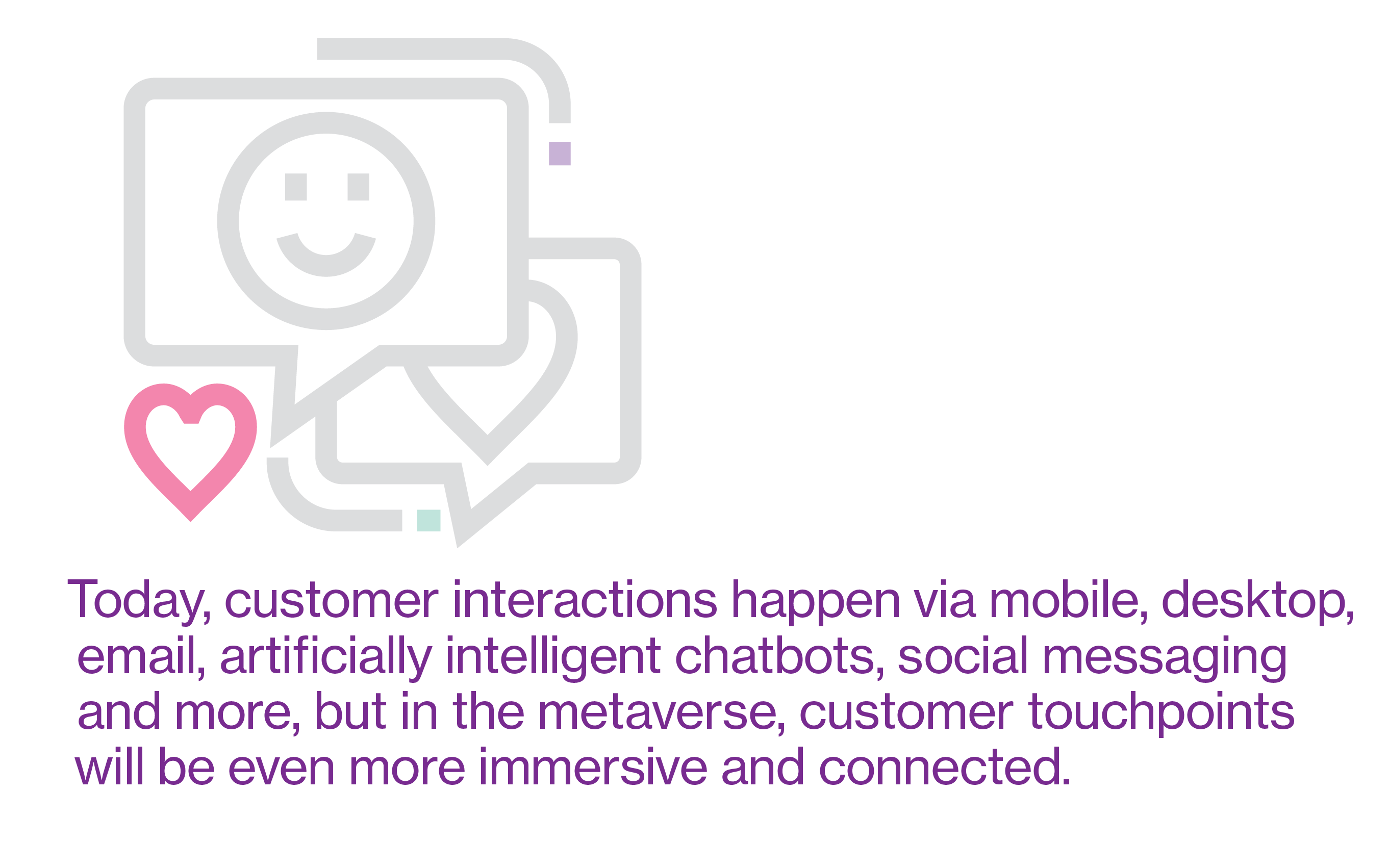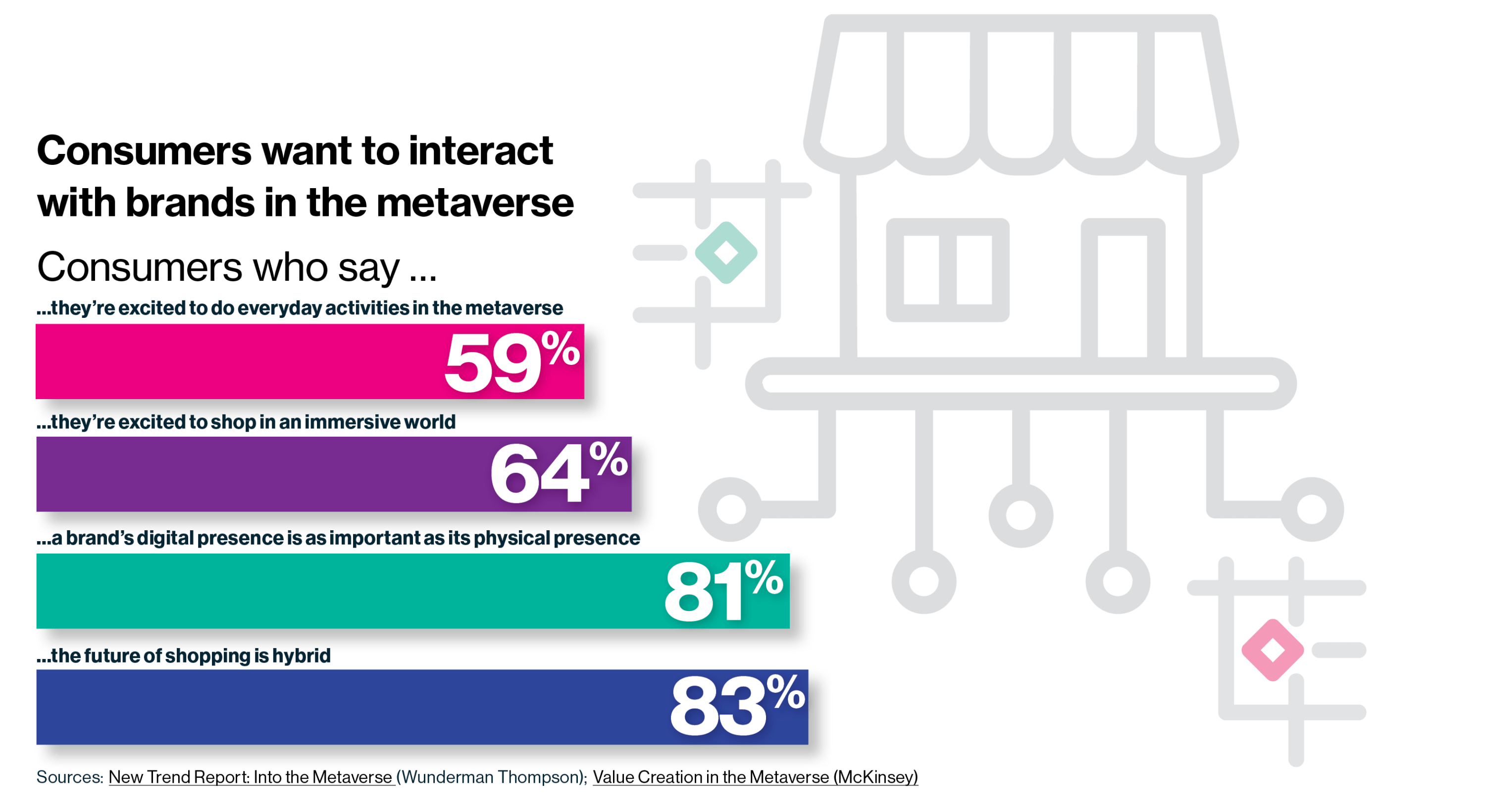This scenario outlines a very near future omnichannel customer experience (CX), seamlessly integrating several different physical and digital retail modes. Today, customer interactions happen via mobile, desktop, email, artificially intelligent chatbots, social messaging and more, but in the metaverse, customer touchpoints will be even more immersive and connected.
“The metaverse is going to be available in a number of different ways—VR/AR glasses, smartphones, tablets and PCs, chat rooms with video, but also probably via up-and-coming things like holograms, digital signage, digital assets, and digital content,” says Ramon Llamas, research director for IDC’s augmented reality/virtual reality (AR/VR) team.
There’s been a lot of buzz lately about companies “migrating” to the metaverse, but this is a bit of a misnomer. Brands are not as much moving to the metaverse as they are expanding into it—connecting it with their traditional, two-dimensional channels. Still, the potential for the metaverse to reshape how customers and brands engage can’t be overstated. Over the next decade, the metaverse will transform CX in the same way e-commerce shook up retail in the 1990s and mobile reimagined social interactions in the early 2000s.

“The metaverse is a completely new virtual world—just like social media presented a new CX channel 15 years ago,” says Sidharth Mukherjee, chief digital officer at Teleperformance, a global company that provides digitally integrated business services. “We’re starting to see metaverse adoption across industries like retail, consumer goods, and health care, in addition to social media, gaming, and the broader tech industry.”
The evolution of customer experience
Right now, omnichannel CX is more than a “nice to have”—it adds tangible value to businesses’ bottom lines. According to the “2021 State of the Connected Consumer Report” by Salesforce, 76% of customers want to use different channels to interact with brands based on the context of their needs or queries. The International Institute for Management Development reports that retailers lose between 10% and 30% of sales if they fail to offer a sufficiently robust omnichannel shopping experience.
Omnichannel is a growing trend in marketing, too— a discipline distinct from CX but with significant overlap. In an analysis of more than 135,000 campaigns, automation software company Omnisend found that companies employing three or more channels for marketing achieved a 494% higher order rate than those relying upon just one.
In addition to offering more ways to reach customers, there’s potential for the metaverse to address real operational pain points. “The world is a 3D place—or 4D if you include time. It’s not a 2D experience, and in fact, 2D experiences feel kind of artificial,” says David Truog, vice president and principal analyst at Forrester Research. “There are many experiences that benefit from three-dimensionality, from touching and manipulation, where the metaverse will be appropriate.”

Take employee recruiting and training. Remote work, a shift accelerated by the covid-19 pandemic, seems likely to stick around for the long term—according to a Gallup survey, nine out of 10 employees want to keep working remotely in some capacity post-pandemic. As traditional definitions of “the office” continue to evolve, the metaverse could provide an ideal venue for recruiting and training geographically dispersed employees, as well as hosting team-building activities and company-wide events.




